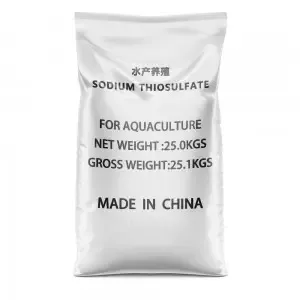



sodium hydroxide solid msds
Safety and Handling of Sodium Hydroxide Solid A Comprehensive Overview
Sodium hydroxide, commonly known as caustic soda or lye, is a highly versatile chemical used in various industrial and household applications. Due to its corrosive nature, it is crucial to handle sodium hydroxide solid with care. The Material Safety Data Sheet (MSDS) provides essential information regarding its properties, hazards, and safe handling procedures.
Chemical Properties
Sodium hydroxide is a white, odorless solid that is hygroscopic in nature, meaning it can absorb moisture from the atmosphere. It has a highly alkaline pH level, typically around 13, making it a robust agent for neutralizing acids. Common applications include its use in the manufacturing of soaps, detergents, and textiles, as well as in water treatment and food processing.
Hazards Identification
The MSDS outlines several hazards associated with sodium hydroxide solid. It is classified as a corrosive substance that can cause severe burns to skin and eyes upon direct contact. Inhalation of powdered sodium hydroxide may irritate the respiratory tract. Symptoms of exposure can include coughing, chest pain, and difficulty breathing. Moreover, the chemical can lead to significant damage to mucous membranes if ingested.
First Aid Measures
sodium hydroxide solid msds

In the event of exposure, immediate action is necessary. For skin contact, flush the affected area with copious amounts of water for at least 15 minutes and remove contaminated clothing. If sodium hydroxide enters the eyes, prompt rinsing with water is essential, and medical attention should be sought immediately. In cases of inhalation, the affected individual should be moved to fresh air, and medical assistance should be contacted if symptoms persist.
Safe Handling and Storage
When handling sodium hydroxide solid, it is vital to wear appropriate personal protective equipment (PPE), including gloves, goggles, and respirators, to prevent exposure. The chemical should be stored in a cool, dry place, away from incompatible materials such as acids and organic compounds. Containers should be labeled clearly to ensure proper identification and should be sealed tightly to prevent moisture absorption.
Environmental Considerations
Sodium hydroxide can have harmful effects on aquatic life and should be handled in a manner that prevents release into the environment. Spills should be contained and neutralized with a suitable acidic material, while waste disposal must be conducted in accordance with local regulations.
Conclusion
Sodium hydroxide solid is a powerful and widely used chemical; however, its inherent hazards necessitate strict safety measures. Adhering to the guidelines outlined in the MSDS will help ensure safe handling, effective emergency responses, and minimal environmental impact, promoting a safe working environment for all involved. Proper education and training in the handling of sodium hydroxide are essential to prevent accidents and health issues.
-
Why Sodium Persulfate Is Everywhere NowNewsJul.07,2025
-
Why Polyacrylamide Is in High DemandNewsJul.07,2025
-
Understanding Paint Chemicals and Their ApplicationsNewsJul.07,2025
-
Smart Use Of Mining ChemicalsNewsJul.07,2025
-
Practical Uses of Potassium MonopersulfateNewsJul.07,2025
-
Agrochemicals In Real FarmingNewsJul.07,2025
-
Sodium Chlorite Hot UsesNewsJul.01,2025










